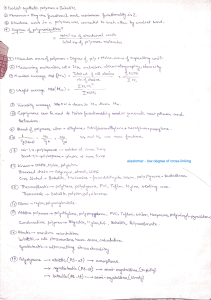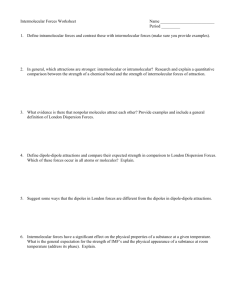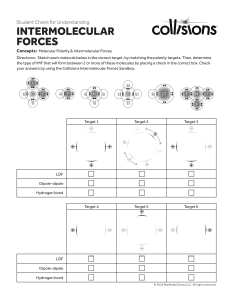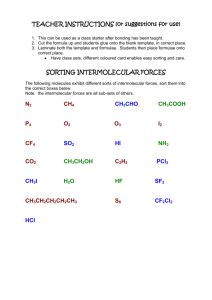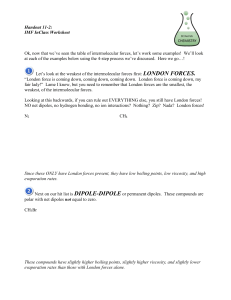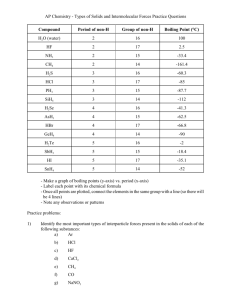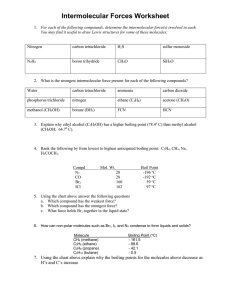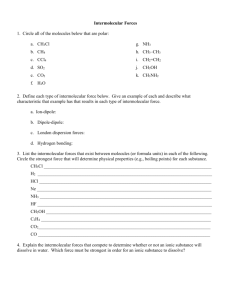Intermolecular Forces Worksheet
advertisement
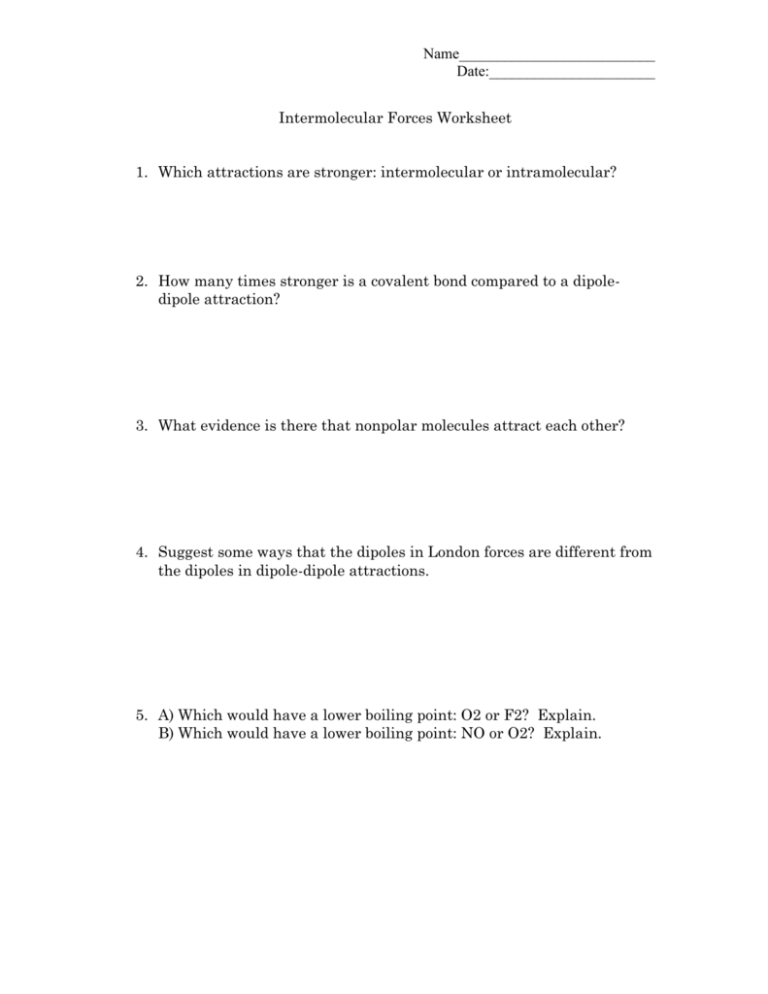
Name__________________________ Date:______________________ Intermolecular Forces Worksheet 1. Which attractions are stronger: intermolecular or intramolecular? 2. How many times stronger is a covalent bond compared to a dipoledipole attraction? 3. What evidence is there that nonpolar molecules attract each other? 4. Suggest some ways that the dipoles in London forces are different from the dipoles in dipole-dipole attractions. 5. A) Which would have a lower boiling point: O2 or F2? Explain. B) Which would have a lower boiling point: NO or O2? Explain. 6. Which would you expect to have the higher melting point (or boiling point): C8H18 or C4H10? Explain. 7. What two factors causes hydrogen bonds to be so much stronger than typical dipole-dipole bonds? 8. So far we have discussed 4 kinds of intermolecular forces: ionic, dipoledipole, hydrogen bonding, and London forces. What kind(s) of intermolecular forces are present in the following substances: a) NH3, b) SF6, c) PCl3, d) LiCl, e) HBr, f) CO2 (hint: consider EN ( page 263) and molecular shape/polarity)
